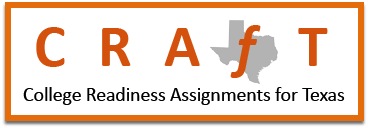I. Numeric Reasoning III.Geometric Reasoning
A. Expressions and equations
1. Explain and differentiate between expressions and equations using words such as “solve,” “evaluate,” and “simplify.”
a. Define what an expression or equation represents.
b. Distinguish among and apply different uses of equations to: state a definition, represent a conditional statement, and represent an identity.
B. Manipulating expressions
1. Recognize and use algebraic (field) properties, concepts, procedures, and algorithms to combine, transform, and evaluate expressions (e.g., polynomials, radicals, rational expressions).
a. Use the algebraic (field) properties (e.g., commutative, associative, distributive) and order of operations to transform expressions to equivalent expressions.
b. Use the algebraic (field) properties and order of operations to evaluate variable expressions when given the value of the variables. c. Explain why the algorithms and procedures used to transform algebraic expressions are valid.
C. Solving equations, inequalities, and systems of equations
1. Recognize and use algebraic (field) properties, concepts, procedures, and algorithms to solve equations, inequalities, and systems of linear equations.
a. Solve equations and inequalities in one variable (e.g., numerical solutions, including those involving absolute value, radical, rational, exponential, and logarithmic).
b. Solve for any variable in an equation or inequality that has two or more variables (e.g., literal equations).
c. Use equality and algebraic (field) properties to solve an equation by constructing a sequence of equivalent equations.
d. Use the elimination, substitution, and/or graphing method to solve a linear system of equations with two variables.
e. Use technology when using matrices to solve linear systems with two or three variables.
2. Explain the difference between the solution set of an equation and the solution set of an inequality.
a. Represent the solution set of an equation or inequality in various ways (e.g. set notation, interval notation, graphical representation, including shading).
b. Understand that the real solution to an equation can be represented as the x-coordinate of the point of intersection of two graphs.
c. Understand the relationship between a solution of a system of two linear equations with two variables and the graphs of the corresponding lines.
d. Graph a function and understand the relationship between its real zeros, roots, and the x-intercepts of its graph.
D. Representations
1. Interpret multiple representations of equations and relationships.
a. Interpret graphical representations of equations.
b. Understand how variables can be used to express generalizations and represent situations.
c. Recognize the solution(s) to an equation from a table of values.
d. Describe numerical patterns using algebraic expressions and equations in closed or recursive forms, such as arithmetic sequences.
2. Translate among multiple representations of equations and relationships.
a. Explain the common information presented in multiple representations of a relationship.
b. Translate one given representation to another representation (e.g., tabular to graphic, graphic to symbolic).
c. Use multiple representations to determine rate of change.
d. Determine if a relationship given in graphical, tabular, or symbolic form is linear or nonlinear.


 Show Printable Version
Show Printable Version



